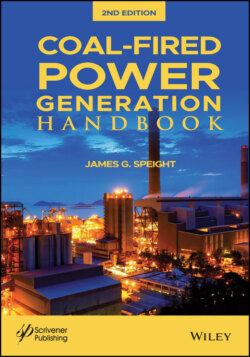Читать книгу Coal-Fired Power Generation Handbook - James Speight G., James G. Speight - Страница 43
2.4.2 Liptinite Group
ОглавлениеThe members of the liptinite group are considered to originate from the resinous and waxy material of plants, including resins, cuticles, spores, pollen exines and algal remains. They tend to retain their original plant form, i.e., they resemble plant fossils, and are characterized by high reactivity and volatility, and are more aliphatic (Campbell et al., 2010). The members of this maceral group can be distinguished from the members of the vitrinite group by higher hydrogen and lower oxygen content, and do have the highest calorific value of all coal macerals.
The liptinite group comprises the macerals which are (i) sporinite, (ii) cutinite, (iii) suberinite, (iv) resinite, (v) alginate, and (vi) liptodetrinite, which all appear to have resisted major changes during coalification as they are classified based on their respective fossil plant nature. The cuticles found in this maceral group came from the cuticles normally found in leaves and thin plant stems.
Sporinite is obtained from the waxy coating of fossil spores and pollen. These groups of macerals are the lightest, with their density ranging from 1.18 to 1.25 g/cm3 and during devolatilization give a high yield of volatile matter, such as gas and volatile tar. The liptinite content is the least recognized of three maceral group because of the generally low content, which (in many international coals) may rarely exceed 7% v/v of the total maceral composition.
